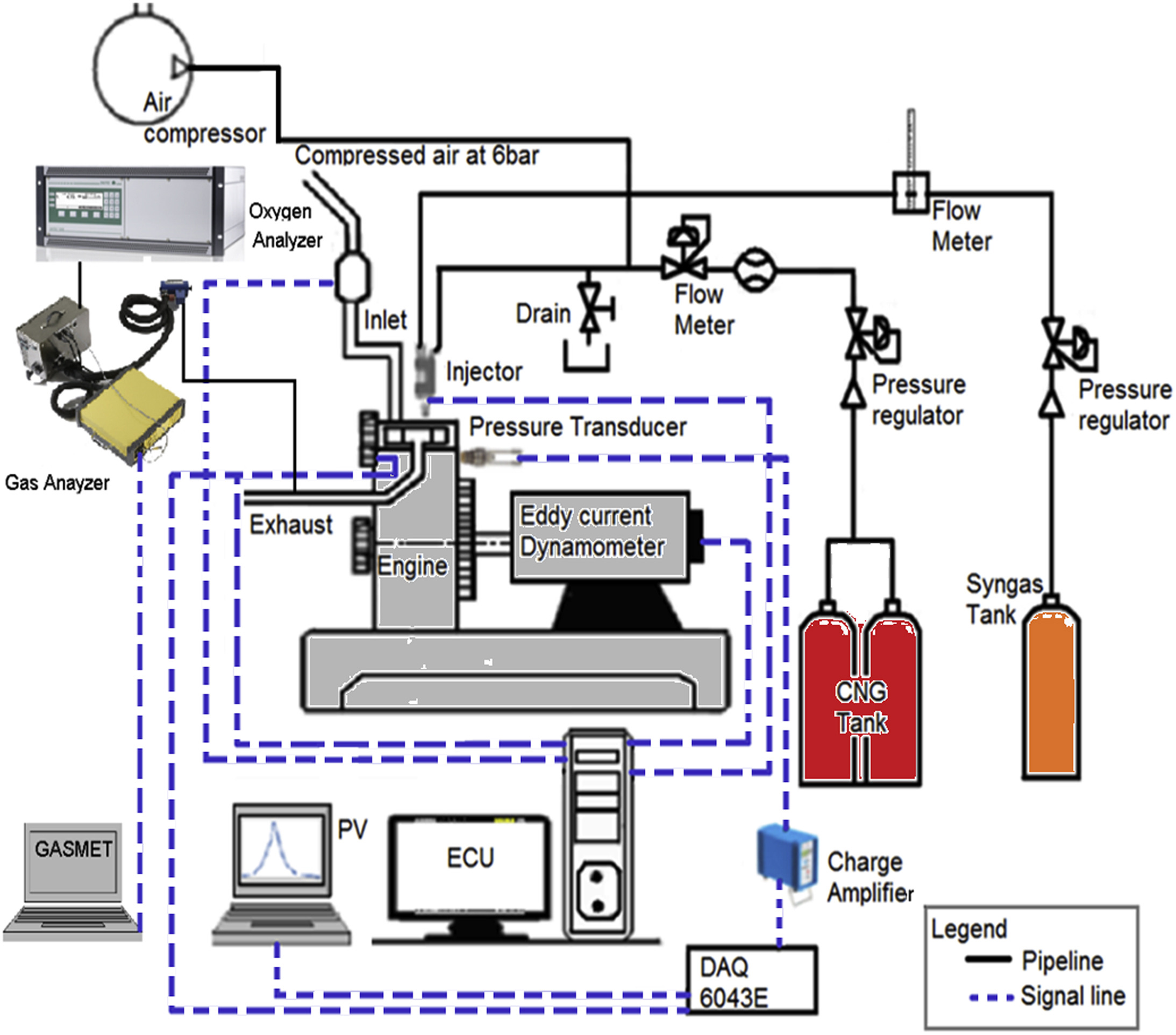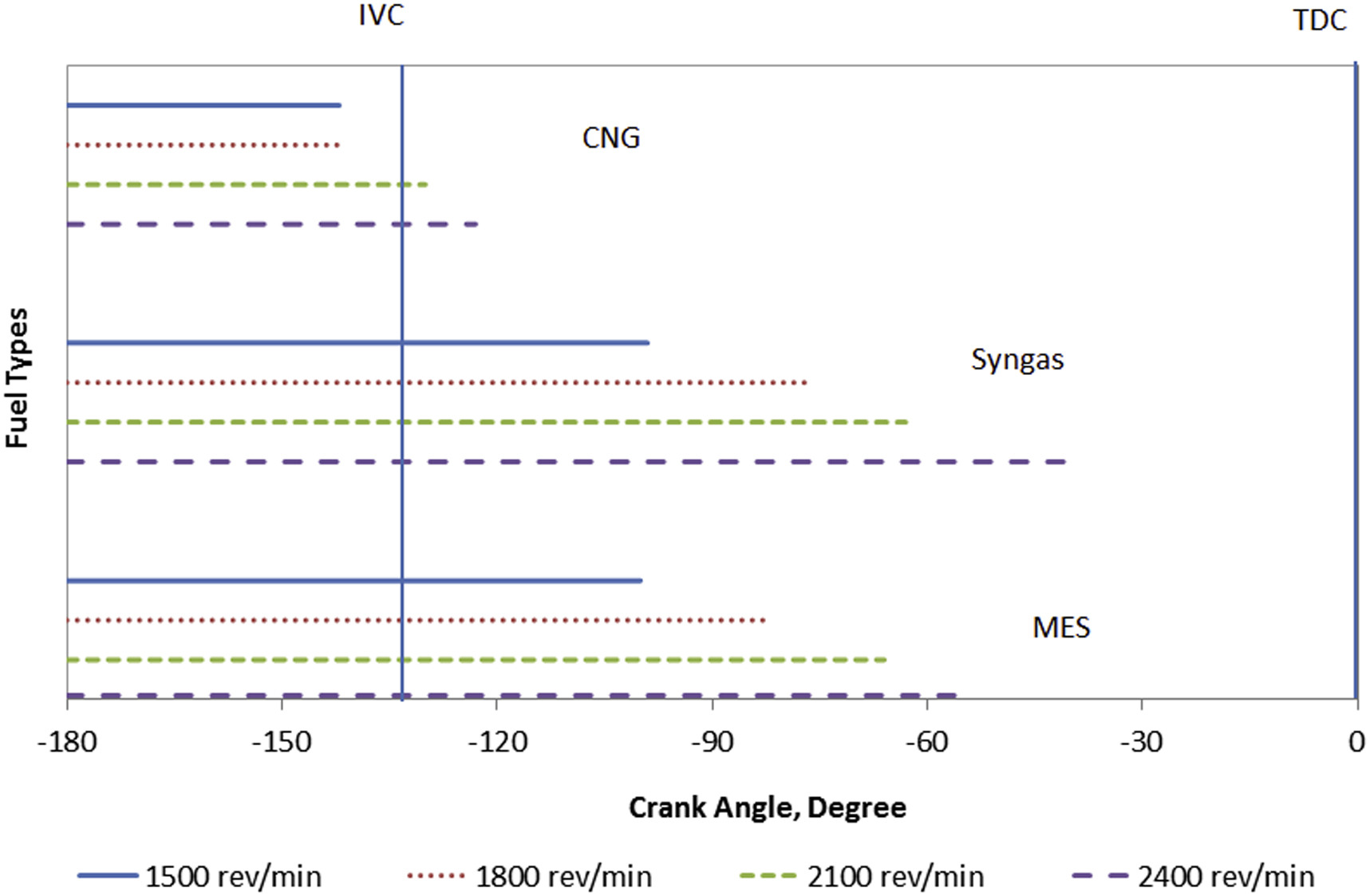Methane enrichment of syngas (H2/CO) in a spark-ignition directinjection engine: Combustion, performance and emissions comparison with syngas and Compressed Natural Gas
Author: Shaharin Anwar Sulaiman - October 2015
Abstract
Syngas produced from gasification of solid fuels can serve best as transition fuel from the carbon-based to the hydrogen-based fuels in the internal combustion engines. The lone drawback is its low calorific value being between one tenth and one fifth of that of CNG (Compressed Natural Gas). This results in higher BSFC (brake specific fuel consumption) and limitation on the injection duration at late injection timings in the DI (direct-injection) SI (spark-ignition) engine. Recently, there have been efforts to enrich the syngas with methane so that the calorific value can be improved. This paper presents experimental results on the effect of methane-enrichment of syngas on the combustion, performance and emissions in the DISI engine. The result shows that the MES (methane-enriched syngas) has extended the operation excess air ratio (λ) compared to syngas and CNG at the same engine speed. Methane-enrichment has maintained the faster and smoother combustion, the lower brake emissions of carbon monoxide and total hydrocarbon, and higher brake emissions of nitrogen oxides observed with syngas. Besides, MES improved the maximum brake thermal efficiency and the BSFC of the syngas by 30.2% and 21.3%, respectively. Therefore, MES can be better replacement to CNG in the DISI engine at all load conditions.
Methodology
A single cylinder DISI stationary research engine is employed in the current study. The engine has a compression ratio of 14:1 and a rated power of 13 kW at 5000 RPM (revolutions per minute). Fig. 1 shows a schematic of the research engine and its instrumentations. The basic data of the engine were reported in a separate work. The experimental system is equipped with an eddy-current dynamometer, Kistler piezo-electric pressure transducer, ECU (engine control unit), CA (crank angle) encoder, gas analyzer and oxygen analyzer. The sensitivity of the Kistler piezo-electric pressure transducer (6061B) is 25 pC/bar. The dynamic accuracy of the crank angle encoder at 10,000 rpm is +0.02. The response time of FTIR (Fourier Transform Infrared) Gasmet CR 2000 gas analyzer is <2.5s and the result update time is <0.4s. It can analyze up to 50 gas components simultaneously. The detail descriptions on the accuracy and the measurement uncertainty of the measurement tools and the sensors can be found in a report by Hagos. The present study is conducted by setting the inlet manifold throttle at wide open and the ignition advance to deliver maximum brake torque. The engine is operated between 1500 and 2400 RPM. The parameters under investigation are fuel types and air/fuel ratio.
Impact & Benefits
Comustion Efficiency: Methane enrichment can enhance combustion efficiency in SIDI engines by improving flame propagation and stability. Methane has a higher flame speed compared to hydrogen and carbon monoxide, which can lead to more complete combustion and better energy release.
Performance Improvement: Methane enrichment tends to enhance engine performance by increasing power output and torque. This is due to methane's higher energy content compared to hydrogen and carbon monoxide. The higher combustion efficiency also contributes to improved performance.
Emissions Reduction: Methane enrichment can lead to lower emissions of harmful pollutants such as nitrogen oxides (NOx) and particulate matter (PM). Methane has lower carbon-to-hydrogen ratio compared to syngas, resulting in reduced carbon monoxide (CO) and hydrocarbon (HC) emissions. Additionally, the higher combustion efficiency reduces the formation of incomplete combustion byproducts.
Stability and Control: Methane enrichment can provide better stability and control over combustion processes in SIDI engines. It helps in mitigating issues such as knock (uncontrolled combustion) and misfires, which can affect engine performance and durability.
Market Potential
Environmental Regulations: With increasing concerns about air pollution and climate change, governments worldwide are implementing stricter emissions regulations for vehicles. Technologies that offer improved combustion efficiency and lower emissions, such as methane enrichment in SIDI engines, can gain traction in markets where stringent environmental standards are enforced.
Energy Security and Sustainability: Diversification of fuel sources and reduction of dependency on fossil fuels are driving forces behind the adoption of alternative fuels. Methane enrichment of syngas offers a pathway to utilize renewable or low-carbon fuel sources, such as biomass or waste-derived syngas, contributing to energy security and sustainability goals.
Performance and Efficiency: Consumers and fleet operators are increasingly concerned about fuel efficiency and overall vehicle performance. Methane enrichment has the potential to enhance both combustion efficiency and engine performance, which can be attractive selling points for vehicle manufacturers and end-users.
Cost Competitiveness: The market potential of methane enrichment will also depend on its cost competitiveness compared to alternative fuels such as compressed natural gas (CNG) and conventional gasoline. Factors such as the availability and cost of syngas production, engine modification costs, and operational expenses will influence the economic feasibility of adopting this technology.



